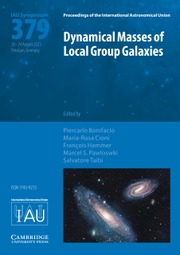No CrossRef data available.
Article contents
Deep learning and numerical simulations to infer the evolution of MaNGA galaxies
Published online by Cambridge University Press: 01 August 2025
Abstract
As surveys grow, the challenge is how to explore and interpret the increasing quantity of data. Integral field spectroscopic (IFS) galaxy surveys are a good example of how data have grown in complexity and in volume. In order to find complex relations between the spatially resolved structures of galaxies and their accretion histories, we combine IFS high-dimensionality data, deep learning and numerical simulations to infer the evolutionary paths of galaxies. In this work we generate 10,000 simulated galaxies from TNG50 hydro-cosmological simulation to compare with the 10,000 galaxies observed in MaNGA, thus generating a mock MaNGA sample. We then analyse how the simulated galaxies reproduce the properties of MaNGA galaxies and study how the evolutionary paths of the mock galaxies relate to their observable properties. We finish by outlining our next steps which include using contrastive learning.
Information
- Type
- Poster Paper
- Information
- Proceedings of the International Astronomical Union , Volume 19 , Symposium S368: Machine Learning in Astronomy: Possibilities and Pitfalls , August 2023 , pp. 116 - 118
- Copyright
- © The Author(s), 2025. Published by Cambridge University Press on behalf of International Astronomical Union


